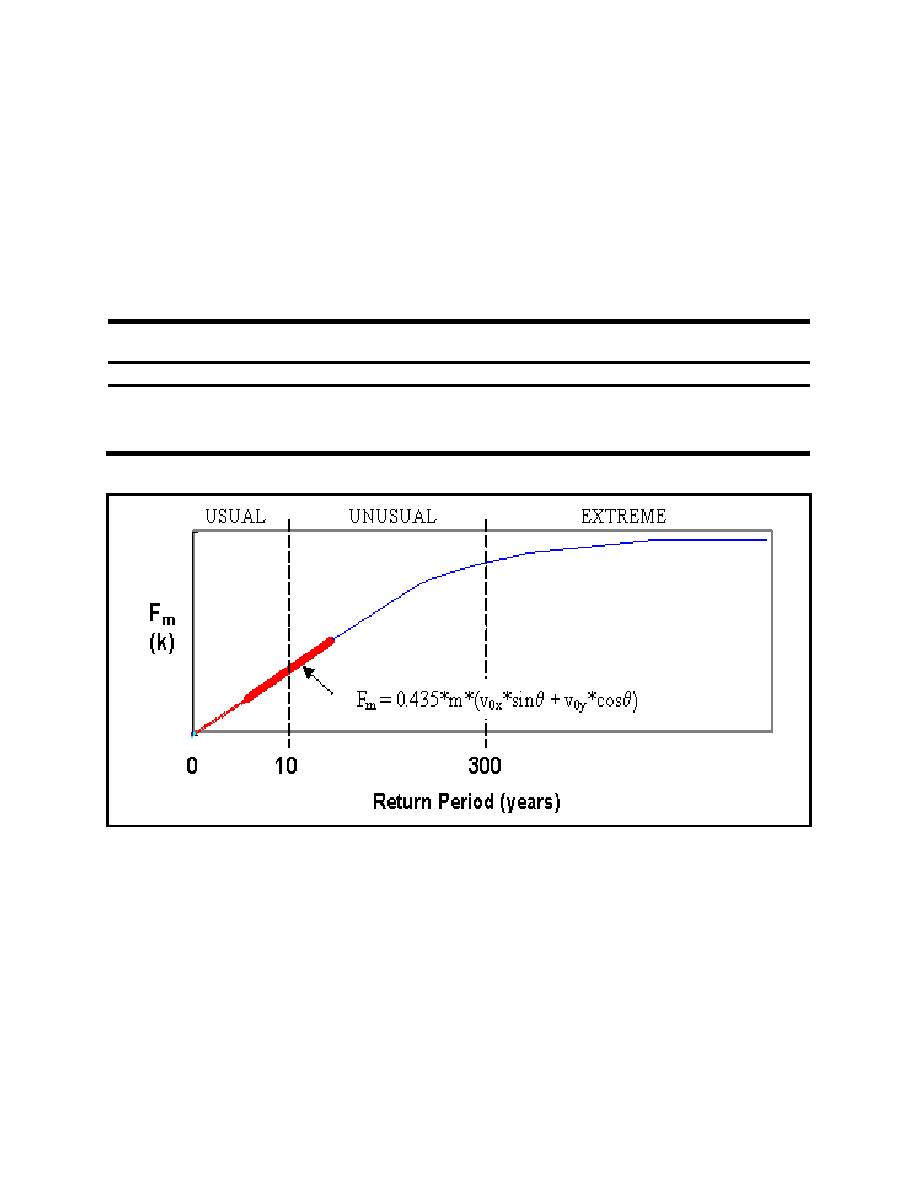
ETL 1110-2-563
30 Sep 04
Extreme These loads are due to rare events and can be regarded as an emergency condition.
Moderate to extreme damage can occur to either the wall or barge without complete collapse of
structure (i.e., structure is repairable but with a loss of function or with an extended disruption of
service to navigation traffic). This typically corresponds to a 10 percent chance of being exceeded
within a 100-year service life.
(2) From these definitions of load condition categories, Table B-1 and Figure B-6 show a guideline
for annual probabilities and return periods for barge impact scenarios. The return periods in this table
reflect a design life of 50 years and a service life of at least 100 years, including one major rehabilitation
during its service life.
Table B-1
Preliminary Level Design Return Periods for Barge Impact
Load Condition Categories
Annual Probability of Exceedence
Return Period
Usual
Greater than or equal to 0.1
1-10 years
Unusual
Less that 0.1 but greater than 0.00333
10-300 years
Extreme
Less than 0.00333
>300 years
Figure B-6. Impact force versus return period (Note: Range of data processed from the experiments
represented by darkened line)
c. Use of Probabilistic Barge Impact Analysis (PBIA) to estimate return periods.
(1) The design or evaluation of rigid walls should be based on a range of barge impact angles and
approach velocities that can be realistically expected to occur during its service life. PBIA affords the
ability to define the return period based on the probability of possible impact events. The variables used in
barge impact analysis require numerous combinations of events that cannot be modeled as a discrete
event.
B-5


 Previous Page
Previous Page
